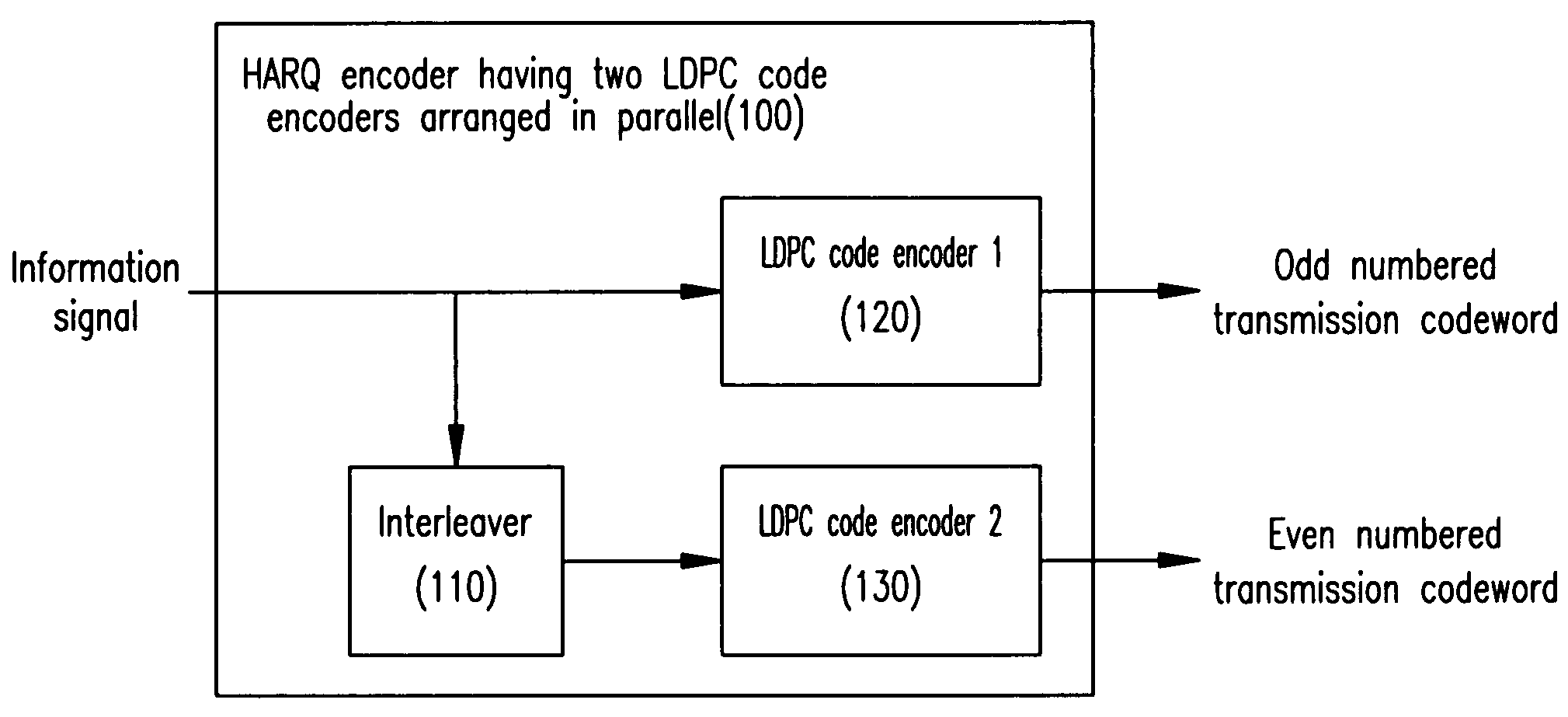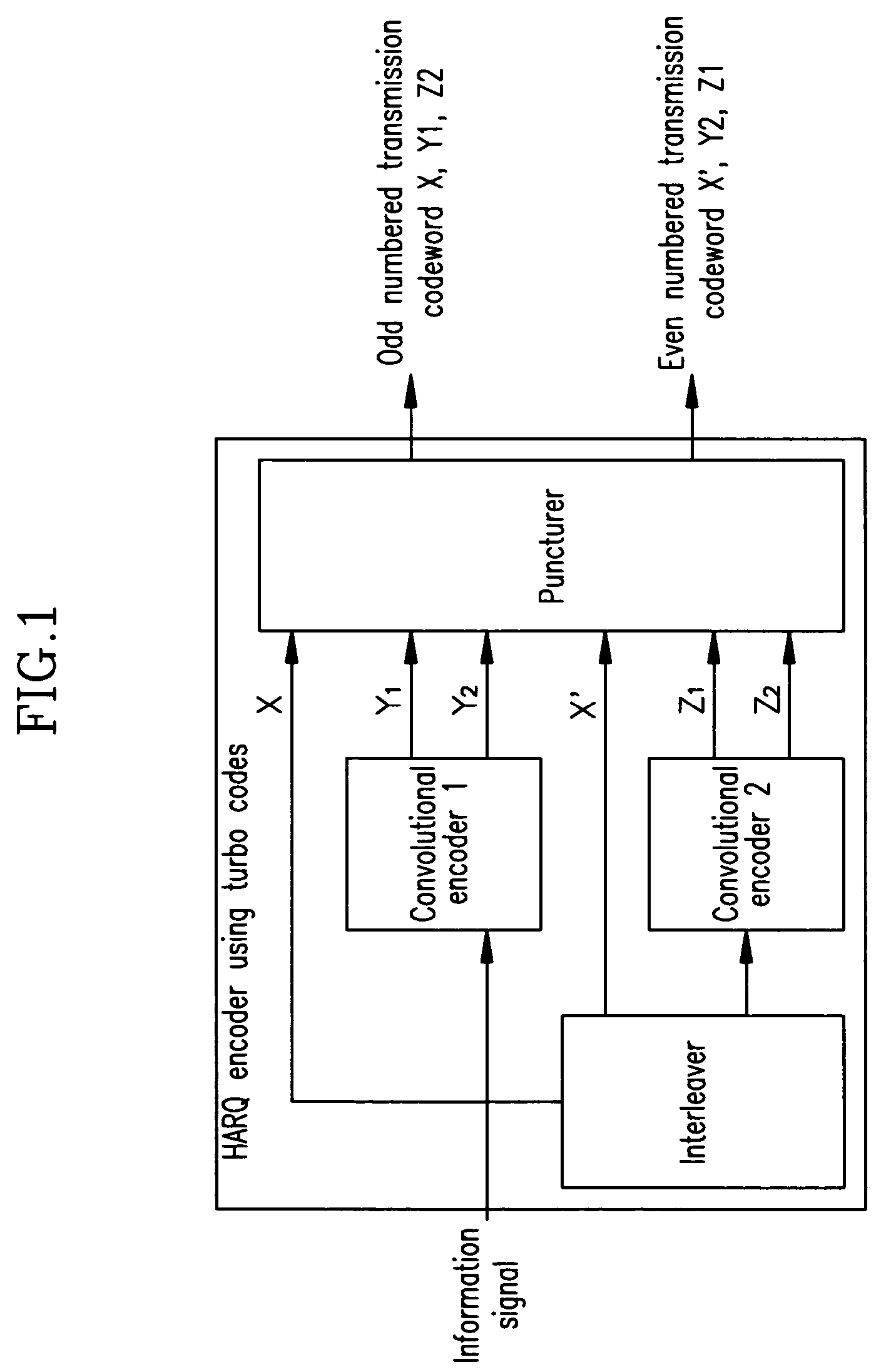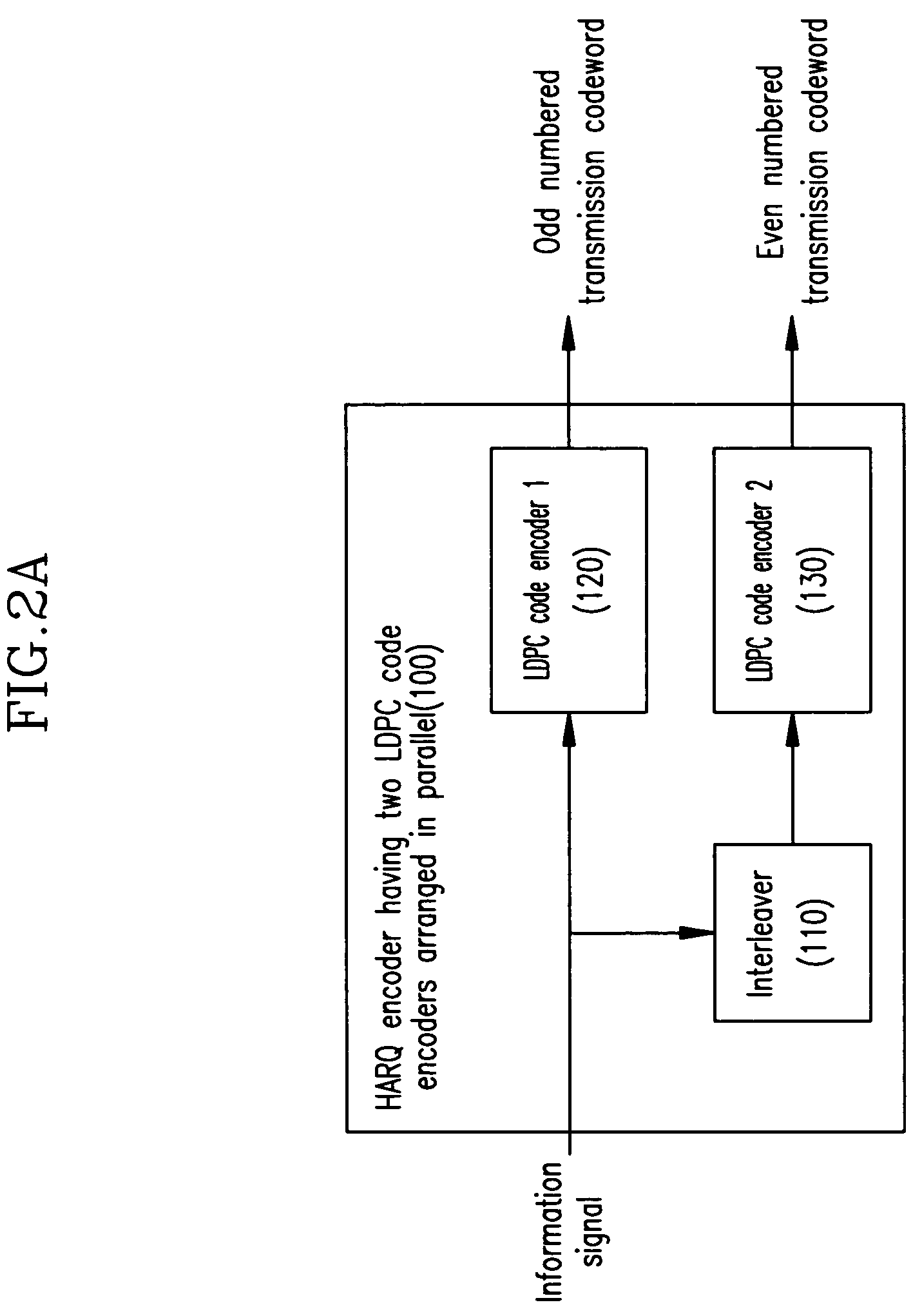Encoding/decoding apparatus using low density parity check code
a parity check and low density technology, applied in the field of hybrid automatic repeat request (harq) system, can solve the problems increasing system complexity in enhancement of system performance, etc., and achieves the effect of increasing system complexity, increasing system complexity, and enhancing system performan
- Summary
- Abstract
- Description
- Claims
- Application Information
AI Technical Summary
Benefits of technology
Problems solved by technology
Method used
Image
Examples
first embodiment
[0098]On the other hand, the second LDPC code encoder 330 performs encoding on the output signal of the interleaver 320 and transmits the encoded signal to the decoding apparatus 400 when an even numbered retransmission is requested from the decoding apparatus 400. At this time, the output of the interleaver 320 results by interleaving a codeword encoded by the first LDPC code encoder 310, unlike in the present invention, and this difference is also adopted to the decoding apparatus 400.
[0099]The decoding apparatus 400 includes a first LDPC code decoder 440, an interleaver 430, a deinterleaver 420, and a second LDPC code decoder 410.
[0100]The first LDPC code decoder 440 performs LDPC code decoding on the codeword that is LDPC code-encoded and transmitted from the encoding apparatus 300. At this time, the codeword retransmitted in response to the odd numbered retransmission request is encoded with the data outputted from the deinterleaver 420. The first LDPC code decoder 440 performs...
second embodiment
[0110]The operation of the encoding and decoding apparatus using LDPC codes in the HARQ system according to the present invention will be described hereinafter.
[0111]Firstly, the transmit side encoding apparatus 300 encodes the information signal to be transmitted with the first LDPC code encoder 310 and then transmits the encoded information signal to the receive side decoding apparatus 400.
[0112]If receiving an ACK from the decoding apparatus 400, which indicates that the transmitted signal is successfully decoded, the encoding apparatus 100 inputs a new information signal to the first LDPC code encoder 310 so as to repeatedly transmit in the above-explained manner.
[0113]On the other hand, if receiving a NACK from the decoding apparatus 400, which requests retransmission of the previously transmitted signal, the encoding apparatus 300 determines whether the retransmission request is odd or even numbered. If the retransmission request is the second or later and is even numbered, th...
PUM
 Login to View More
Login to View More Abstract
Description
Claims
Application Information
 Login to View More
Login to View More - R&D
- Intellectual Property
- Life Sciences
- Materials
- Tech Scout
- Unparalleled Data Quality
- Higher Quality Content
- 60% Fewer Hallucinations
Browse by: Latest US Patents, China's latest patents, Technical Efficacy Thesaurus, Application Domain, Technology Topic, Popular Technical Reports.
© 2025 PatSnap. All rights reserved.Legal|Privacy policy|Modern Slavery Act Transparency Statement|Sitemap|About US| Contact US: help@patsnap.com



